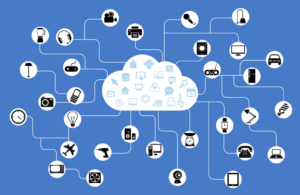Kansas Manufacturers Holding Their Own Through COVID-19 Crisis
Real-Time Data and Contingency Planning Enable Continued Success
Kansas manufacturers have fared better than those in other states during the COVID-19 crisis, though the impact has played out differently depending on the industry.
Manufacturers in the food production, plastics, and machinery sectors have remained relatively stable, while those in the aerospace and oil and gas industries have been hit hard.
A key factor that has helped most Kansas manufacturers continue operations during the pandemic is that the state defined manufacturers as essential businesses, enabling them to remain open when other businesses and institutions were shut down to stem the spread of COVID-19. As manufacturing facilities shut down in California and along the East Coast, Kansas manufacturers picked up many of their customers. Some owners believe the new customers will stay with them even when other states have reopened, but they are taking nothing for granted.
Some manufacturers say they haven’t been hit hard by the COVID-19 slowdown yet, but expect to feel it later. Equipment manufacturers report that they have enough backlog orders to keep them busy right now, but for some, new orders are slowing down.
Shift to making COVID-19-related products
Many Kansas manufacturers are diversified, producing more than one product, and that has helped them respond to the new opportunities that the COVID-19 pandemic has presented. Breweries have shifted over to producing hand sanitizer, and one manufacturer in the oil and gas industry retooled to produce ventilators under the guidance of those from the medical equipment sector. Another manufacturer reports selling more hand sanitizer and cleaning products in the first quarter of 2020 than were sold in all of 2019.
It is too early in the financial reporting period to determine how much of their typical revenue these companies have replaced by responding to the public health needs, but it is clear that shifting gears has enabled them to keep their work forces on the payroll and minimize their emergency borrowing. Loans taken out by Kansas businesses through the federal Paycheck Protection Program average about $20,000. Kansas ranks in the top 10 in the nation in the number of loans received by businesses. Together the PPP and Economic Injury Disaster Loan programs have supported more than 50,000 Kansas businesses, including manufacturers.
While keeping workers on the payroll is a positive, manufacturers have had to be creative about providing a safe environment for their workers. Some companies are adding shifts, spreading workers out over more hours so there are fewer in the facility at any one time to provide for social distancing, and providing the necessary protective devices.
Need for real-time data
 As companies have dealt with the challenges of sudden market shrinkage, the need to retool to produce different products, and to work remotely, one thing that has evolved is the need for manufacturers to have real-time data, both on the financial and operational sides of their businesses.
As companies have dealt with the challenges of sudden market shrinkage, the need to retool to produce different products, and to work remotely, one thing that has evolved is the need for manufacturers to have real-time data, both on the financial and operational sides of their businesses.
On the financial side, companies that have an ERP (enterprise resource planning software system) are able to look at key financial ratios to quickly see trends and project into the future. Decisions can be made on a day’s notice, rather than waiting for after the fact, end-of-the-month financials. Many smaller manufacturers have not made the investment in these systems, but the COVID-19 crisis has proven their value for the companies that have done so. Sec. 179 expensing, bonus depreciation, R & D tax credits, and state credits should be explored by smaller companies to help finance the investment.
Where to go from here?
Manufacturers looking to the future must consider how to plan for the next crisis and deal with the future state of uncertainty that currently exists. Some measures to consider are:
- Analyze what you have learned from the COVID-19 experience. The sudden, short-term adaptations you have made may strengthen your business in the long run.
- Develop a current state assessment. You may find redundancies that should be addressed. Determine if your business model still works or if it needs to be modified.
- Examine safety measures. What changes did you make for employees that may have to be worked into your permanent workflow?
- Look at supply and demand. What would happen if your raw materials were suddenly not available? Or if your markets suddenly dried up? Now, more than ever, it’s important to reach out and communicate with your vendors and customers.
- Assess your financial position. Budgets and cash flow analysis should be created around several scenarios – a worst-case scenario, a normal scenario, and a high growth scenario. Make sure to also include short-term and long-term projections.
- Look at automation and innovation. Many manufacturers are not as automated as they could be, driving up workforce costs and slowing the time to market measure. If there were another crisis in the future that required your workers to go home and stay there, what kind of automation could keep your business going?
- Is your financial software in the cloud yet? If you must work remotely and minimize the people in the plant, you can do that more easily with cloud-based systems.
- Contingency planning. If you have a contingency plan, it’s probably time to update it. If you don’t have one, it is time to put one together. The emergency measures you took to keep your business moving during the COVID-19 crisis may serve as a template for your contingency plan.
Contact your Adams Brown advisor for a discussion about how to best navigate the COVID-19 crisis or consultation regarding any of these items.

